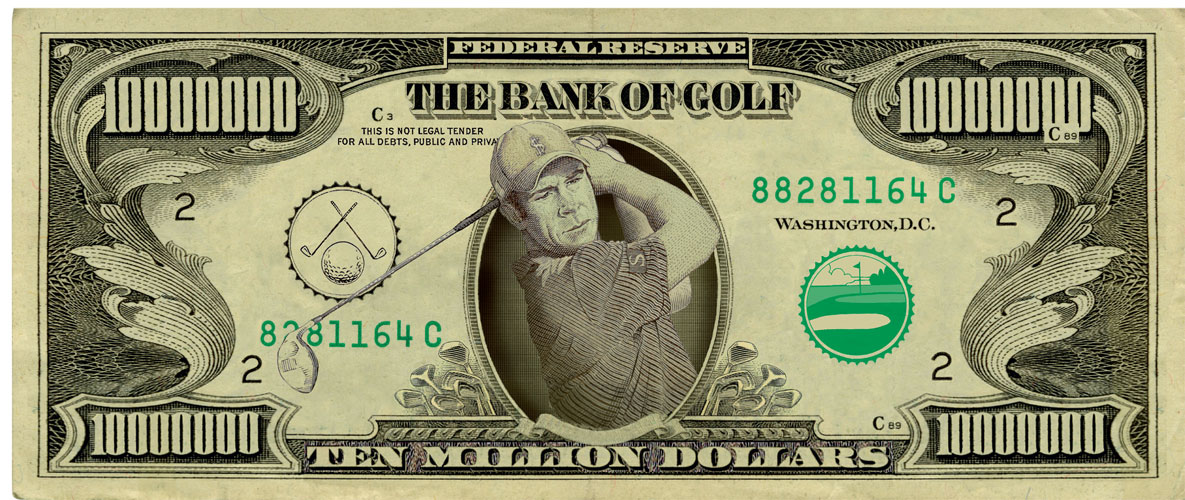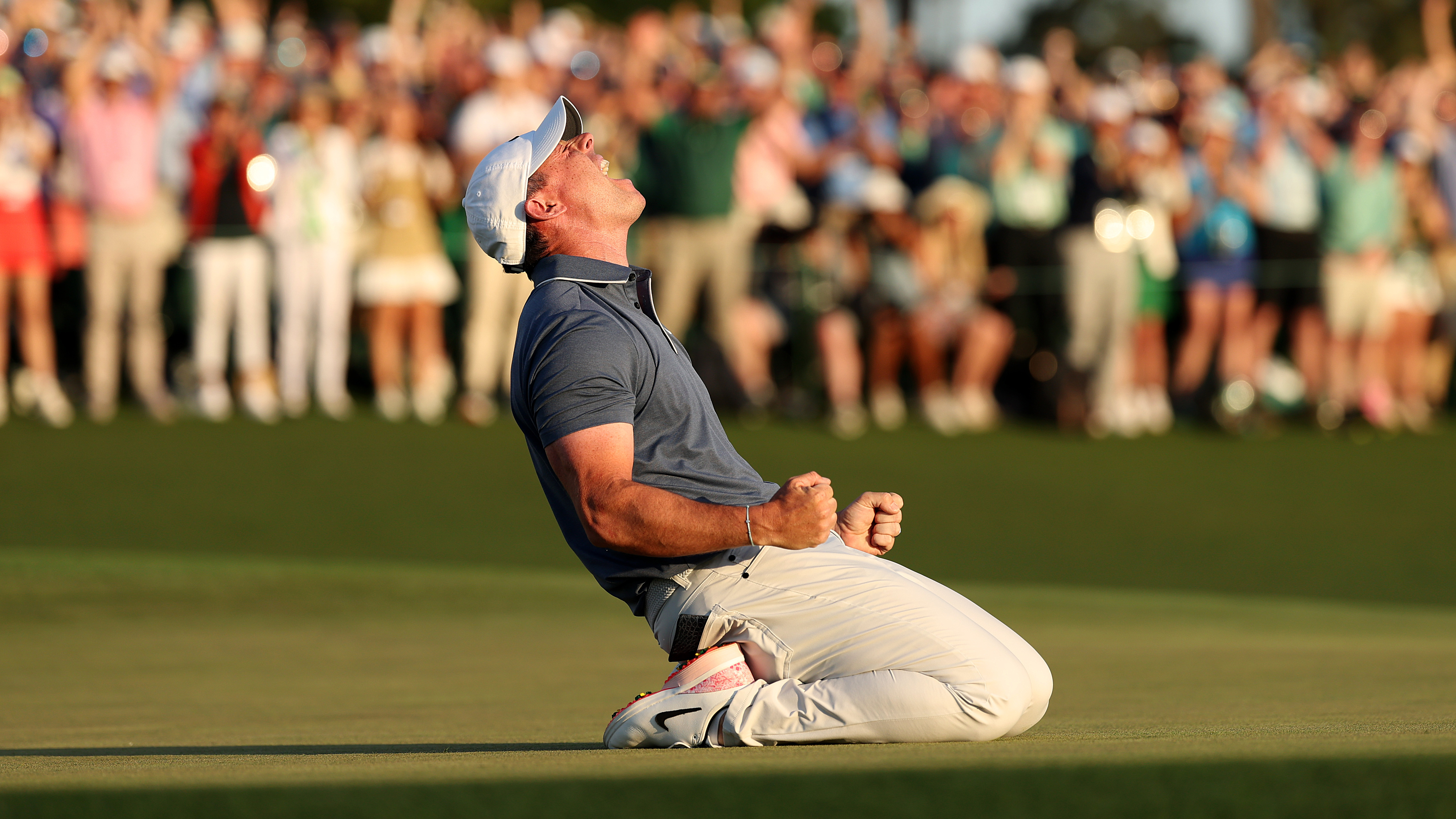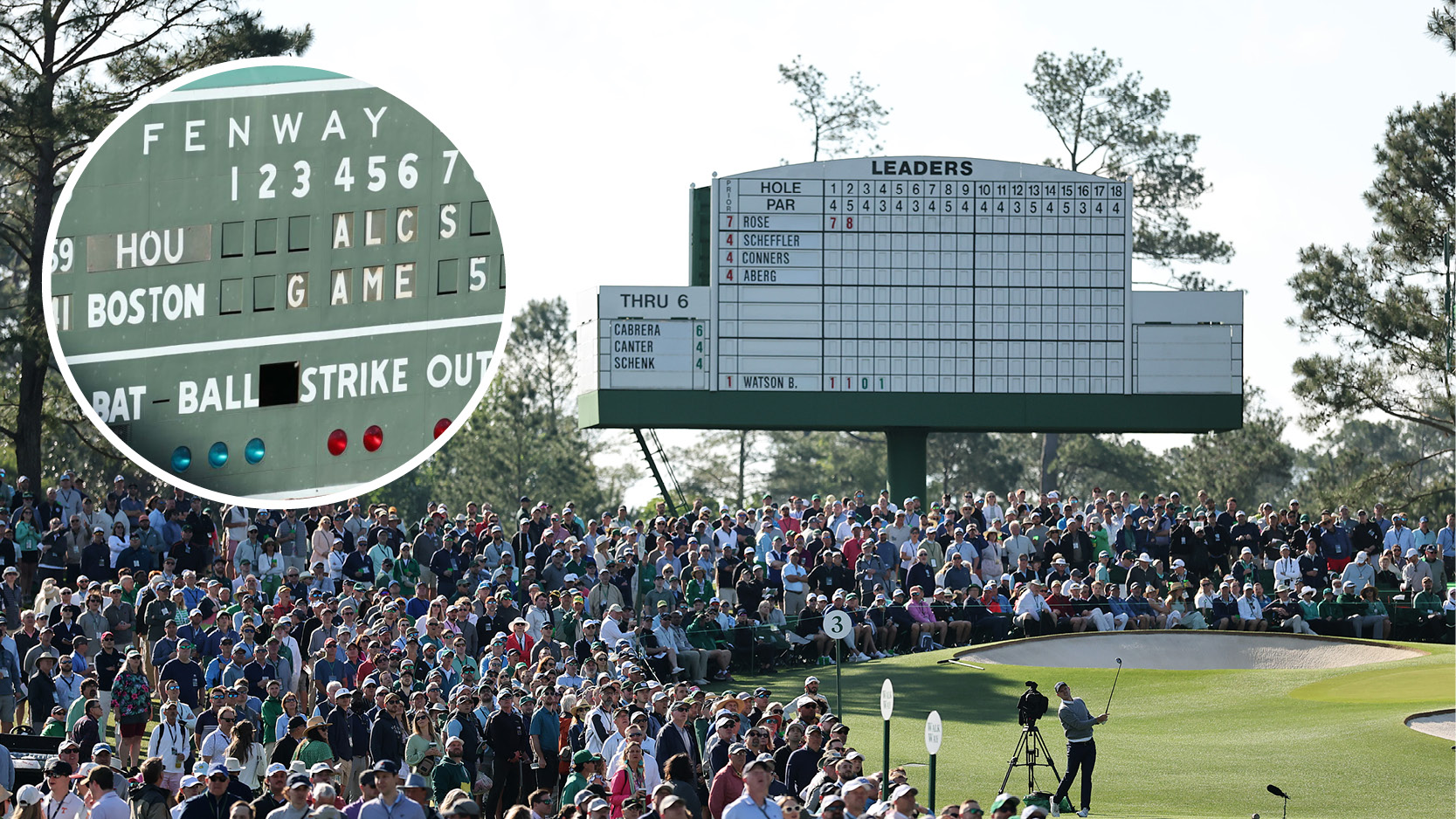The price of fame
Is the 2007 FedEx Cup the start of an historic new era for golf, as some believe, or is it further proof that money provides the greatest motivation for today’s elite class of players? Bill Elliott pours himself a stiff drink and explains…

However you try to analyse what is, or is not, going to happen in the wacky world of golf during 2007, one word keeps coming back. And it comes back in capital letters. Now what do you think this word might be? Well, let me give you a big clue. Or rather, allow dear, old, departed Sam Snead to lay down a trail.
Seventy years ago in California, Snead won the Bing Crosby Pro-Am. First prize was $500, which, to be fair, was well worth bending down to pick up in 1937. Snead did not have to do any bending, he just had to step forward drenched in applause and accept a cheque from the only man who could smoke a pipe and croon at the same time.
Sam, however, shook his head when Bing offered the cheque. Instead of shaking hands and posing for a few photos the young pro said, ?If you don?t mind Mr Crosby, I?d rather have cash.? In this brief exchange the template for all professional golfers for all time was laid down.
Yes, the word that won?t go away is, of course, MONEY. This coming year the word is not only back, it?s bigger than ever. Whether it is better depends on your point of view. If
you tend to fall into the camp that bemoans the modern pro game as an over-rewarded swamp for over-cosseted players then 2007 is not destined to be your favourite year. What?s beyond any doubt is the fact that money is set to dominate like never before.
Welcome to the FedEx Cup, a multi-million dollar extravaganza that this season will try to transform the United States Tour from an awful lot of ho-hum into a crazed race for a finishing line, which is set to reward the eventual champion as never before. Or, as Tour supremo Tim Finchem puts it, we are at the dawn of ?an historic new era?.
WHAT?S THE BIG IDEA?
Get the Golf Monthly Newsletter
Subscribe to the Golf Monthly newsletter to stay up to date with all the latest tour news, equipment news, reviews, head-to-heads and buyer’s guides from our team of experienced experts.
Mostly, this historic era will impact on soft-handed, hard-faced accountants, as players already wallowing in riches find themselves forced to employ assistants to load the folding stuff into oversized wheelbarrows.
If you do not know what the FedEx Cup is ? and a puzzled Seve Ballesteros had never heard of it when we chatted last month ? then here is a brief précis. I say brief because to try to explain it would take an extra magazine although, to be honest, this is a bit of a smokescreen because despite having read through the rules and regs several times I?m not overly sure I understand it properly myself.
Anyway, here, from this idiot, is some sort of guide to the New Big Deal? Every tournament in the States this year ? plus the Open Championship ? will not only carry its own prize fund, it will offer points to everyone who makes the cut. These points will be graded down from 4,500 to a mere 50 for the last guy on Sunday. Extra points will be available at the four Majors and three World Championship events. Eventually 144 guys will qualify for the FedEx Cup.
Now at this stage ? August ? the leading points gatherer, or Tiger as we shall call this player, could be, say, 8,000 points ahead of his nearest pursuer. However, in an attempt to make the climax just that ? a climax ? all points differentials will be slashed so that Tiger will go into the play-off competition no more than 1,000 points in the lead. In this way, Finchem and his mates hope to keep the drama going.
The final takes place during four consecutive weeks from August 20 to September 16 during the Barclays Classic in New York, the Deutsche Bank Championship in Boston, the BMW Championship in Chicago, and, finally ? please god ? at The Tour Championship in Atlanta. During this month-long schlep the field will be cut from an opening 144 to 120, then to 70 and, at last, 30. Our man Tiger will eventually win, and pick up $10 million dollars for his efforts. A further $25 million will be divided up among the also-rans.
Or rather, he might pick up $10 million, because they are still arguing about how this money is paid. A serious group at the Tour believing the bulk of it should be lobbed into a pension fund or similar. This, incidentally, may well be the core reason Mr Woods did not bother to turn up at this year?s Tour Championship; the rumour suggesting that he seriously did not want any more pension money but prefers his winnings to pop up very quickly in one of his cash accounts. Somewhere Sam Snead is chuckling fiercely.
A TALE OF TWO TOURS
And that?s about it. There will be a kind of car crash fascination, I suppose, about the final event, even if for some of us this hectic chase for money carries all the attraction of a Bling Fair for people who think Hieronymus Bosch is an up-and-coming Italian interior designer which, in his own imaginative way, I suppose Bosch was. Except, of course, he was Dutch.
After this, basically, everyone goes home with big smiles on their faces, except for those players who have missed out. For them there will be more season-ending tournaments as they try to keep their cards or make even more dosh. This, although I cannot confirm it as yet, is to be known as The Also-Rans Tour. Which brings us neatly enough on to the European Tour.
When the FedEx Cup was announced to a partly breathless, but mostly confused, golf world several weeks ago, the initial concern was that the US Tour was about to dominate even more than before, and that the European circuit was facing, if not oblivion, then a serious undermining of its position as the Second Most Important Tour on the planet. This may yet be a regrettable part of the fallout but there is a significant chink of light.
While Finchem has put almost all his eggs in one basket, a basket that is labelled TV, the European chaps have concentrated on developing sponsor relationships that do not depend on TV ratings. If Finchem?s big gamble pays off then everyone outside America will suffer in some way, but even if it does work quite well then the European circuit may yet benefit. Certainly a lot of disgruntled golfers are going to be kicking their heels towards the end of August, and Europe may just seem more attractive to them than ever before.
We can only wait and see. Meanwhile, my pal at the European Tour is sticking by his guns, which is to say he is sticking by his theory that European golfers do best when they play a majority of golf on their home circuit and not in the United States. He always has maintained this and recent events have only added even greater conviction to his argument.
The return of Justin Rose to winning ways in Europe ? well, okay, a co-sanctioned event in Australia ? is just the sort of thing my friend seizes on enthusiastically. He has a point. Rose?s time in the USA has not been wasted but it has been winless, even if he has made himself rich in the process. Now, apparently, he has rededicated himself to Europe, or at least decided to play a lot more over here.
This is good news. When the Open kicks off at Carnoustie next summer it will have been nine years since Justin thrilled us all as a 17-year-old amateur at Royal Birkdale. Time flies when you?re having fun, of course, but for Justin it has not all been fun. The loss of his father, a slump in form, a flurry of victories and then a defection to America, which has kind of worked out but not quite been the success he craved, has meant some serious growing up for a young man who is sublimely talented.
CHANGING DIRECTION
The Justin Rose we will see this year will be different than before. For a start, he will be married and for another thing he will be harder. But then he always has been hard beneath
an attractively soft and unfailingly polite exterior. It took guts for Rose to persevere in the US, just as it?s taken strength to change coach during the last year. David Leadbetter is not a man you can jettison lightly but, for Justin, it now seems it was the correct move.
What we must hope now is that he kicks on. Our last Major winner, Paul Lawrie, triumphed at Carnoustie all those years ago. Since then we have waited in vain for someone else from Europe to break into the truly elite ranks. With a bit of luck we might have had one or two winners but instead, mostly, we got Tiger Woods and Phil Mickelson.
But then the dice remains heavily loaded in favour of the Americans, with three of the four Majors rooted in their homeland. This year they get all three of the World Championships as well. This, of course, is beyond greedy; this is simply disgraceful.
It may be that the time is fast approaching when we, who do not live in the United States, decide that the concept of the four Majors is now past its sell-by date. Consider this heresy? Well maybe, but remember the idea of these Majors only came about because Arnold Palmer and Jack Nicklaus thought they were important, and because a guy called Bob Drum dreamt up a collective noun for the Masters, US and British Opens, and the USPGA Championship.
Who was Drum? Bob was a huge man, an American sportswriter who wrote brilliantly about golf, and who subsisted on a diet of large vodka tonics ? ?and easy on the tonic, pal? ? and Marlboro cigarettes. I was impressed when I found out that Bob came up with the ?Majors? tagline and became even more impressed when I then discovered that he got fed up waiting for America to join the Second World War, came to Britain early in 1940, and two months later hurled his Spitfire at the Luftwaffe over southern England.
What would Bob have said about the FedEx Cup concept? I suspect he would have said nothing. Instead he would have headed for the nearest bar and ordered a new drink. Vodka. Large. No tonic. He wouldn?t have been alone?
-
 Rory McIlroy Wins The Masters In Playoff To Complete Career Grand Slam
Rory McIlroy Wins The Masters In Playoff To Complete Career Grand SlamThe Northern Irishman battled past Ryder Cup teammate, Justin Rose to finally seal his first Masters title and become the sixth man to win all four men's Majors
By Jonny Leighfield Published
-
 Did You Know The Masters Leaderboard Was Inspired By Fenway Park?
Did You Know The Masters Leaderboard Was Inspired By Fenway Park?The Masters leaderboards are an iconic and historic part of the Augusta National Major, but did you know about its origins and how it operates today?
By Matt Cradock Published